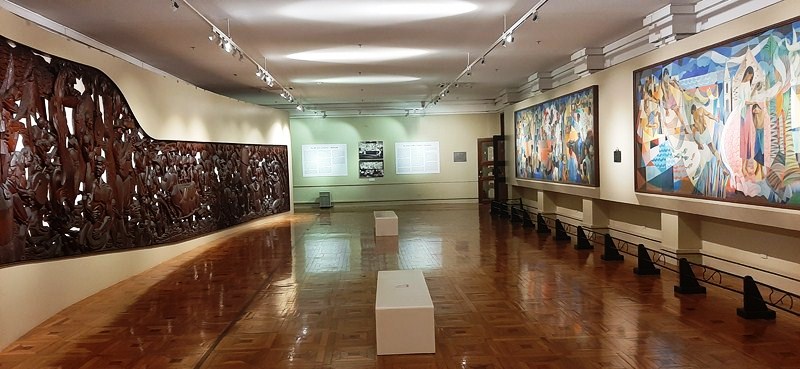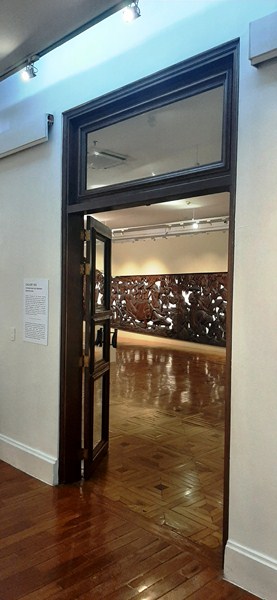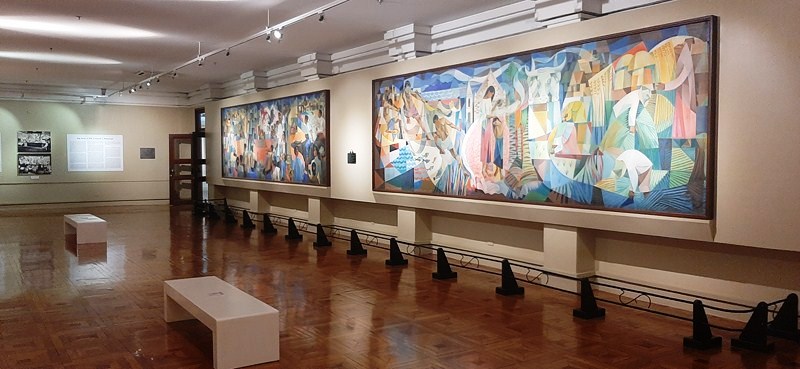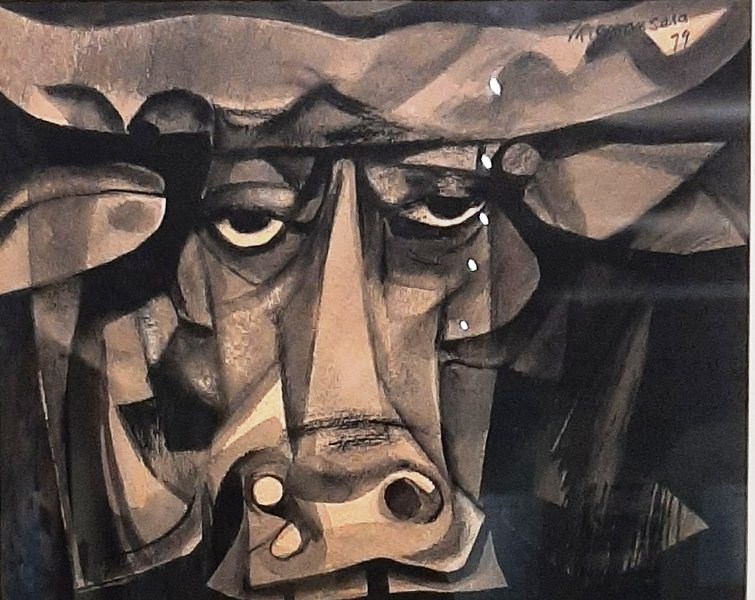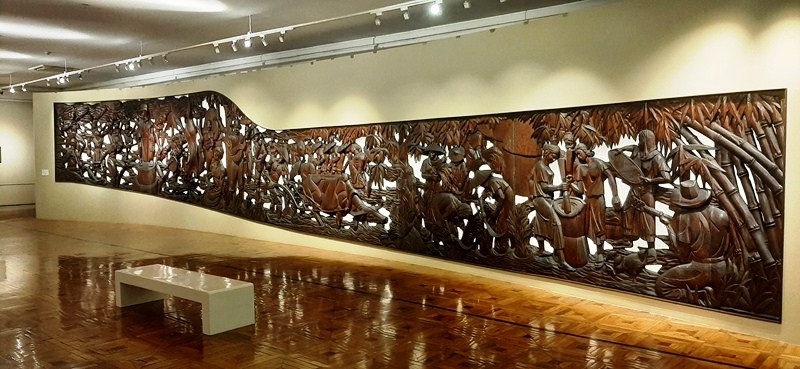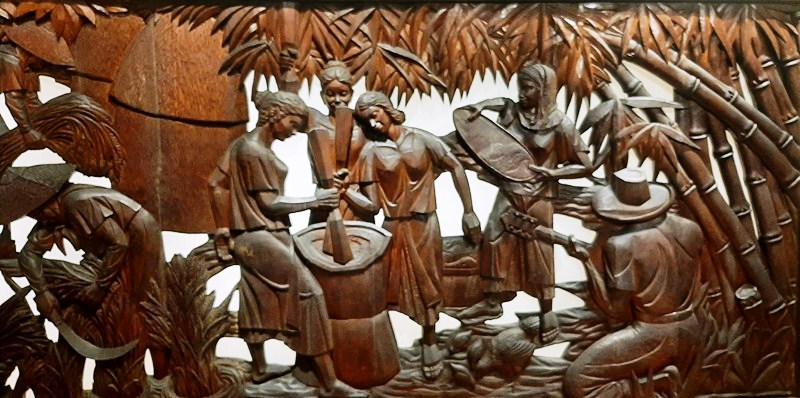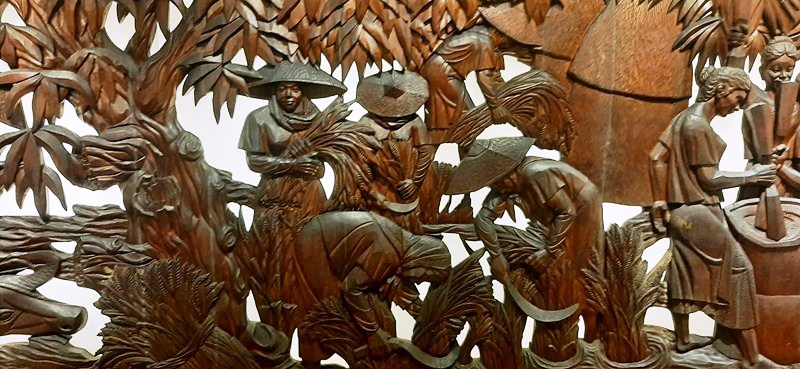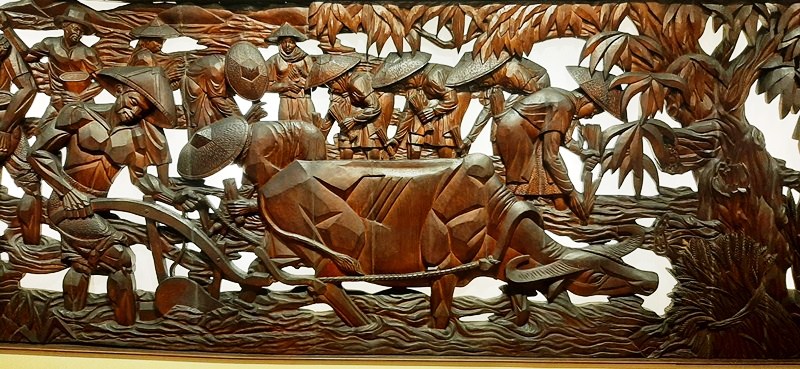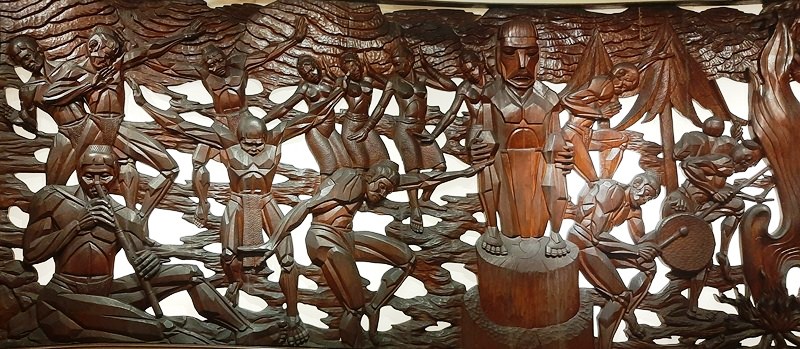Gallery XXII, a permanent exhibit at the third floor of the National Museum of Fine Arts (NMFA), features two large-scale paintings by National Artist Vicente S. Manansala (1910-1981) from the collection of the International Rice Research Institute (IRRI).
Check out “National Museum of Fine Arts”
These paintings were commissioned by the institute to depict Filipino life, labor, and leisure, and were completed in 1962. Initially, they were put on display on the walls of the dining hall and cafeteria of the IRRI headquarters in Los Baños, Laguna.
Through a partnership between IRRI and the National Museum of the Philippines, and to protect and preserve the masterpieces, the paintings were transferred to the IRRI Hall, an art exhibition of the National Museum of the Philippines in the historic Legislative Building. The two large paintings were elevated from Important Cultural Properties, to National Cultural Treasures (the first Manansalas to gain such status), on May 14, 2015. That same day, an official heritage marker announcing the recognition was installed by the National Museum of the Philippines and the IRRI Hall opened for public viewing.
Check out “Old Legislative Building”
The figures are rendered in trademark Manansala, with overlapping transparent polygonal cells that play up the two-dimensionality of the painting.
 They are some of the most important examples of his work exploring his technique on transparent cubism in which, instead of breaking down the picture plane, Manansala devised figurative angular forms that uses, as reference, layered colors of stained glass windows, as well as the translucence of capiz shell windows and piña fabrics.
They are some of the most important examples of his work exploring his technique on transparent cubism in which, instead of breaking down the picture plane, Manansala devised figurative angular forms that uses, as reference, layered colors of stained glass windows, as well as the translucence of capiz shell windows and piña fabrics.
The two Manansala murals are a lighthearted narration of Filipino rural life. One is a joyful, pastel-colored medley of labor. Flanking the two sides are scenes of fishing and rice-planting while, at the center, as focal point, is a woman bathing a child.
The second painting, a spectacle of small-town festivities, depicts a game of sipa, the national sport, on the left while, on the right, are two men competing in a carabao race. The stretch of canvas is lined with a crowd of people watching two roosters in a midair cockfight.
Also on display are studies in watercolor for this series, which Manansala made for the IRRI commission, where his technique is perceptible.
Also featured in this gallery is “Philippine Folklore,” a large-scale, 1,536 cm. (50 ft.) long narra wood relief by renowned sculptor Jose P. Alcantara (1911-2005), Manansala’s childhood friend, from the Philam Life Collection which previously adorned the wall of the then newly constructed, 780-seat Philam Life Theater at United Nations Ave. in Ermita, Manila.
It was made with the aid of his 4 sons and wood carvers from Paete. It is composed of many wood panels, with gaps built together.
This is the second installation of his monumental work at the NMFA. Another, across the 1953 four-panel painting “The Progress of Medicine in the Philippines” by National Artist Carlos V. “Botong” Francisco (1912-1969) loaned from the Philippine General Hospital in 2012, was installed last March 14, 2019 at Gallery XVI.
Check out “Gallery XVI” and “Gallery XXIV”
It shows a continuous scene where Christians and Muslims are doing their own festivities while staying connected to each other. Four of the smaller, decorative narra wood reliefs, of rural life and folklore, are installed in Gallery XXIV.
Both the IRRI murals and these Philam Life reliefs bear the themes of rice cultivation and the culture that surrounds it, including rituals, festivals and belief systems.
Gallery XXII: International Rice Research Institute (IRRI) Hall, 3/F, National Museum of Fine Arts (NMFA), Padre Burgos Avenue, Ermita, Manila 1000, Metro Manila. Tel: (632) 8527-1215 and (632) 8298-1100. Email: inquiry@nationalmuseum.gov.ph. Website: nationalmuseum.gov.ph. Open Tuesdays to Sundays, 9 AM – 4PM. Admission is free. Coordinates: 14°35′13″N 120°58′52″E.
Visitors shall be limited to 100 per museum per session. Visitors are required to pre-book online at https://reservation.nationalmuseum.gov at least a day before the visit. Confirmation of booking will be sent through email. Group reservations are limited to five (5) persons only. Walk-in visitors will NOT be accommodated.

